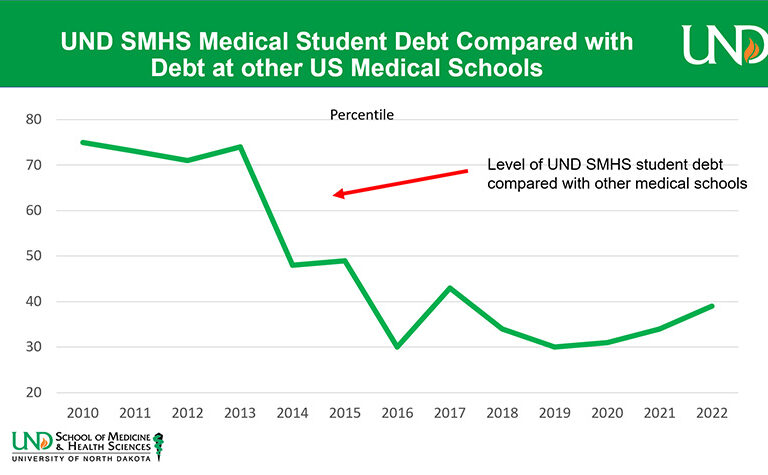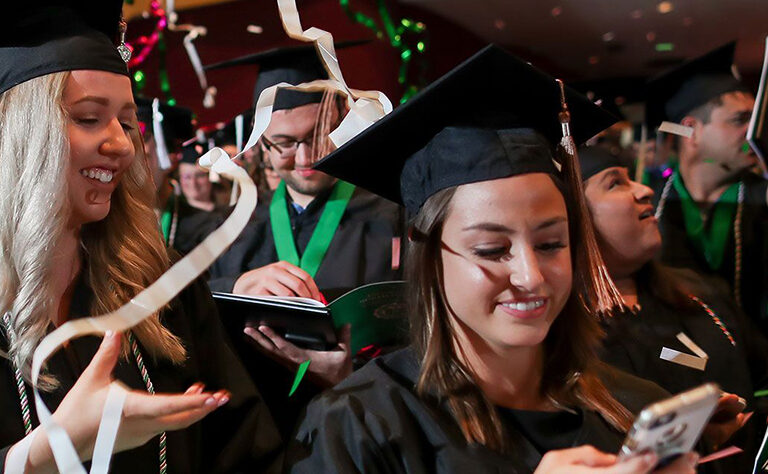From the Dean: From 9/11 to COVID-19
 Today is the sad anniversary of the 19th year since the attacks on the World Trade Center in New York City and Pentagon in Washington D.C. My, has the world changed in the nearly two decades since that tragic event! I distinctly remember where I was when I heard about the attack. My brother lived (and lives) in the City and not that far from Ground Zero. It was quite some time until I heard from him that he and his family were well. We all should pause sometime today for a moment of reflection.
Today is the sad anniversary of the 19th year since the attacks on the World Trade Center in New York City and Pentagon in Washington D.C. My, has the world changed in the nearly two decades since that tragic event! I distinctly remember where I was when I heard about the attack. My brother lived (and lives) in the City and not that far from Ground Zero. It was quite some time until I heard from him that he and his family were well. We all should pause sometime today for a moment of reflection.
Nearly two decades after 9/11, the U.S. is facing a different sort of trauma in the form of an ongoing pandemic that has claimed so many Americans’—and North Dakotans’—lives. But despite the uncertainty of the moment, the good news is that relative to the past few weeks, the number of active positive cases in Grand Forks County is headed down. We are still testing robustly, and the rate of tests returning positive in Grand Forks County is below 6%. This is good news.
On that note, I’ve been having ongoing conversations with our students in an effort to stay connected in the COVID-19 era. I’ve been calling individual students as well as joining class meetings, just to stay in touch and exchange thoughts, ideas and suggestions. In a recent conversation with a fourth-year medical student, I was reminded yet again of some of the unique issues and stresses associated with the pandemic. As you probably know, medical students need to complete residency training (typically taking three or more years) after graduating from medical school in order to get a state license to practice medicine. For a variety of reasons, residency slots have become ever more competitive over the years, and since where you do your residency has a big influence on where and how you will practice for the remainder of your professional career, students are appropriately stressed about applying to (and getting into) the right programs. Although all residencies use a variety of metrics to decide on who will be selected, interviews are important components of the application process. Heretofore, interviews were done in person at the location of the residency program. Well, that’s not how things happen in the COVID-19 era, since all interviews now are virtual (video conferenced). The medical student with whom I was chatting obviously wanted to present himself in the best possible light and was concerned as to how he might appear if he did the interview from his apartment. Thanks to the forethought and efforts of our regional campus deans and their staff, we now have made available interview space on each of our four campuses (Grand Forks, Fargo, Bismarck and Minot) for the use of the students, if they would like to do their interviews on campus (of course, we also provide full audiovisual support for the interviews from our Information Resources staff).
Who would have thought that this might be an issue? But it’s an example of how we need to be flexible and creative during the pandemic. So thanks again for the extraordinarily hard and thoughtful work of Team UND SMHS, especially during this time of heightened stress. Well done! And remember to stay safe and connected – both are possible and essential.
Speaking of our branch campuses, our Center for Family Medicine building in Minot is back open as of this past Tuesday after a major flood, thanks to the efforts of faculty, staff, students and others in the community. We still don’t know the full extent of the damage, particularly to three (expensive!) electrical transformers that initially were waterlogged. Time will tell if the transformers will require repair or replacement, and the full extent of the cost of repairs to the building remains to be determined. For example, the basement floor is damaged and may need to be replaced.
Finally, one more reminder about Joggin’ with Josh tomorrow. Nearly 190 people have signed up, the highest number of enrollees in the 11-year history of the event. What’s also different this year is that it’ll be a virtual event, with each participant walking, jogging or running their own route, be it 5K, 10K or just a stroll. Please participate and post a picture on social media with the hashtag #jogginwjosh. We’ll provide a smorgasbord of photos next week.
Joshua Wynne, MD, MBA, MPH
Vice President for Health Affairs, UND
Dean, UND School of Medicine & Health Sciences


